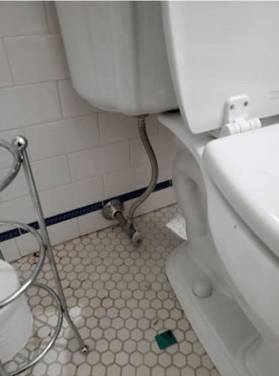Each person is bound to have their own thinking involving Common Causes of Water Damage in a Bathroom.

The washroom is extremely vulnerable for wet buildup and also prospective water damage due to the regular use water in it. This write-up supplies straightforward assessment techniques to aid spotting water damages hazards.
The frequent use of water in the bathroom makes it exceptionally vulnerable for damp build-up as well as potential water damage. By examining it consistently, you can reduce water associated damages.
The adhering to set of evaluations is very easy to perform as well as must be done when in every three months in order to keep your washroom healthy as well as to prevent possible water problems caused by the bath tub, the shower, pipe joints as well as plumbing, sinks, cupboards, and also the commode
Do not disregard performing these inspections and be complete while performing them. Bear in mind that these straightforward inspections can save you a great deal of money by offering very early signs for water damage
Sinks and Cabinets
Sinks and cupboards are exposed to wetness and also humidity day-to-day and are commonly forgotten. Examine on a regular basis under the sink and also on the countertop over it. Repair any kind of drip in the catch as it might suggest drain issues. Browse the sink, sluggish draining pipelines might show a blocked drain. Replace sink seals if they are split or loosened.
Tub and also Shower
The shower and bathtub need unique attention and maintenance. Inspect the floor tiles and replace if fractured. Make sure that there is no missing grout between the tiles. Examine and replace broken caulking at joints where the walls meet the floor or the bathtub. Obstructed drains pipes as well as pipelines issues will certainly stop the tub from drying out as well as may suggest major issues below the bathtub. Consult with a specialist promptly to stop architectural damages. Pay attention to stainings or soft locations around the bathtub wall surfaces as they might show an inner leakage.
Plumbing
Signs for water damages are difficult to find considering that a lot of pipes are set up inside the walls.
Pay special attention to flooring and walls dampness and also discolorations as they might indicate an unnoticeable plumbing problem. Check moisture degrees in adjacent areas also.
The Bathroom
The bathroom is a susceptible water junction. Check the water lines and also look for leaks around the toilet seat, in the hose, and also under the water container. If you find any type of indications of moisture on the floor around the commode, look for leaks in the toilet rim and storage tank seals.
Understand that hanging toilet dish antiperspirants boosts the possibilities for clogs.
Water Damage Signs In The Bathroom To Avoid Cleanup
Musty smell
This is one of the easiest signs to catch because musty smells are so odorous. The damp, earthy, moldy smell should be a big red flag. The smell will develop when moisture gets trapped in surfaces, and begins to facilitate mold growth. Leaking pipes under cabinets, inside walls, and behind shower fixtures will cause moisture to stay trapped and not dry, which will lead to mold growth and spread. As soon as you notice any musty smells in your bathroom, have it checked for hidden water damage and cleanup signs.
Visible mold
If the smell isn’t there to give it away, sometimes you will actually see mold growth. Finding mold in your bathroom is a serious problem, because mold is very harmful to your health. By the time mold growth is visible, it also means that water damage has already occurred and been present for some time. The only way the mold problem can be resolved is to find the source of the moisture and get it stopped. To safely and adequately remove mold, you need to have professionals handle the remediation. Do not waste any time in getting mold problems addressed, fixed, and sanitized so that you can protect you and your family from the many respiratory symptoms caused by mold exposure.
Damaged floors
Bathroom floors should be able to withstand some exposure to water while still remaining in good condition. However, when excess exposure or water leaks occur, they will begin to damage even the most water-resistant flooring. If you notice any cracking, bubbling, staining, or warping on your bathroom floors, there is probably a water leak somewhere causing the distortion. If you notice areas of the floor have become softer, or even have a spongy feeling, there is probably damage to the subfloor. Subflooring is typically made up of plywood. When plywood is exposed to water or moisture, it will absorb it. Once it has become saturated, the weight of the excess water will cause the wood to swell and soften. Check the floors in your bathroom frequently to catch any of these sings before they lead to damaged subflooring.
Changes on walls
When water leaks behind walls, it will cause changes in the drywall. Peeling plaster, blistering paint, and soggy wallpaper are all good indicators that excess water is building up behind the wall. Water leaking behind drywall will cause it to swell and be soft to the tough. If you start to notice gaps along the trim of your walls, or where tile meets the wall, it could also be a strong indicator that there is a leak behind the wall. Any changes, distortion, or damage on the walls should be evaluated as soon as you notice it to prevent further water damage and cleanup.

I am very occupied with How to Prevent Bathroom Water Damage and I hope you liked our piece. Sharing is caring. You never know, you could be helping someone out. Many thanks for taking the time to read it.
Schedule And Pricing
Comments on “Searching for Signs of Water Damage in the Bathroom”